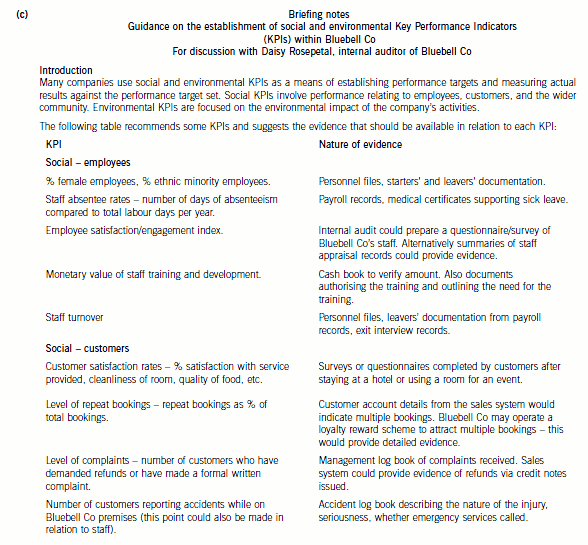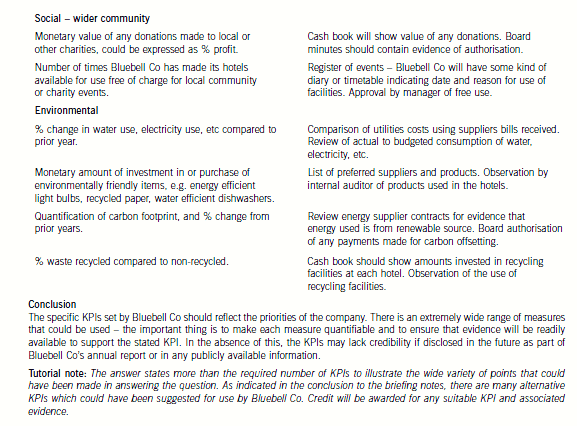ACCA考试常用公式汇总,值得青海省考生收藏!
发布时间:2020-01-10
距离2020年3月份的ACCA考试还有两个多月左右的时间,想必备考ACCA的同学们正在如火如荼地进行着复习。那么,今天这条“公式宝典”你一定要收好,或许会帮助你成功通过ACCA考试哦!接下来,51题库考试学习网将这份“公式宝典”分享给大家:
因为ACCA考试毕竟是国际性质的考试,因此一些题的计算可能就存在不同的计算方式,计算方式的不同也会导致结果的不同。
一、境内
1、税额=销项税-进项税
2、销项税=销售额×税率
3、视销征税无销额(1)当月类平均;(2)近类货平均,(3)组税价=成本×(1+成利率)
4、征增税及消税:
组税价=成本×(1+成润率)+消税
组税价=成本×(1+成润率)/(1-消率)
5、含税额换
不含税销额=含税销额/1+率(一般)
不含税销额=含税销额/1+征率(小规模)
6、购农销农品,或向小纳人购农品:
准扣的进税=买价×扣率(13%)
7、一般纳人外购货物付的运费
准扣的进税=运费×扣除率
*随运付的装卸、保费不扣
8、小纳人纳额=销项额×征率(6%或4%)
*不扣进额
9、小纳人不含税销额=含额/(1+征率)
10、自来水公司销水(6%)
不含税销额=发票额×(1+征率)
以上是国内物品的计算方式,接下来是国外进口的相关公式
二、进口货
1、组税价=关税完价+关税+消税
2、纳额=组税价×税率
三、出口货物退(免)税
1、"免、抵、退"计算方法(指生产企自营委外贸代出口自产)
(1)纳额=内销销税-(进税-免抵退税不免、抵税)
(2)免抵退税=FOB×外汇RMB牌价×退率-免抵退税抵减额
*FOB:出口货物离岸价。
*免抵退税抵减额=免税购原料价×退税率
免税购原料=国内购免原料+进料加工免税进料
进料加工免税进口料件组税价=到岸价+关、消税
(3)应退税和免抵税
A、如期末留抵税≤免抵退税,则:
应退税=期末留抵税
免抵税=免抵退税-应退税
B、期末留抵税>免抵退税,则:
应退税=免抵退税
免抵税=0
*期末留抵税额据《增值税纳税申报表》中"期末留抵税额"定。
(4)免抵退税不得免和抵税
免抵退税不免和抵税=FOB×外汇RMB牌价×(出口征率-出口退率)-免抵退税不免抵税抵减额
免抵退税不免和抵扣税抵减额=免税进原料价×(出口征率-出口货物退率)
2、先征后退
(1)外贸及外贸制度工贸企购货出口,出口增税免;出口后按收购成本与退税率算退税还外贸,征、退税差计企业成本
应退税额=外贸购不含增税购进金额×退税率
(2)外贸企购小纳人出货口增税退税规定:
A、从小纳人购并持普通发票准退税的抽纱、工艺品等12类出口货物,销售出口货入免,退还出口货进税
退税=[发票列(含税)销额]/(1+征率)×6%或5%
B、从小纳人购代开的增税发票的出口货:
退税=增税发票金额×6%或5%
C、外企托生企加工出口货的退税规定:
原辅料退税=国内原辅料增税发票进项×原辅料退税率
以上这些就是全部ACCA考试常用公式,希望对大家有所帮助!最后51题库考试学习网想告诉大家:“放弃可以找到一万个理由,但坚持只需一个信念!致敬那些在ACCA备考路上永不放弃的人,好结果只留给有毅力的人。”
下面小编为大家准备了 ACCA考试 的相关考题,供大家学习参考。
3 Assume that today’s date is 10 May 2005.
You have recently been approached by Fred Flop. Fred is the managing director and 100% shareholder of Flop
Limited, a UK trading company with one wholly owned subsidiary. Both companies have a 31 March year-end.
Fred informs you that he is experiencing problems in dealing with aspects of his company tax returns. The company
accountant has been unable to keep up to date with matters, and Fred also believes that mistakes have been made
in the past. Fred needs assistance and tells you the following:
Year ended 31 March 2003
The corporation tax return for this period was not submitted until 2 November 2004, and corporation tax of £123,500
was paid at the same time. Profits chargeable to corporation tax were stated as £704,300.
A formal notice (CT203) requiring the company to file a self-assessment corporation tax return (dated 1 February
2004) had been received by the company on 4 February 2004.
A detailed examination of the accounts and tax computation has revealed the following.
– Computer equipment totalling £50,000 had been expensed in the accounts. No adjustment has been made in
the tax computation.
– A provision of £10,000 was made for repairs, but there is no evidence of supporting information.
– Legal and professional fees totalling £46,500 were allowed in full without any explanation. Fred has
subsequently produced the following analysis:
Analysis of legal & professional fees
£
Legal fees on a failed attempt to secure a trading loan 15,000
Debt collection agency fees 12,800
Obtaining planning consent for building extension 15,700
Accountant’s fees for preparing accounts 14,000
Legal fees relating to a trade dispute 19,000
– No enquiry has yet been raised by the Inland Revenue.
– Flop Ltd was a large company in terms of the Companies Act definition for the year in question.
– Flop Ltd had taxable profits of £595,000 in the previous year.
Year ended 31 March 2004
The corporation tax return has not yet been submitted for this year. The accounts are late and nearing completion,
with only one change still to be made. A notice requiring the company to file a self-assessment corporation tax return
(CT203) dated 27 July 2004 was received on 1 August 2004. No corporation tax has yet been paid.
1 – The computation currently shows profits chargeable to corporation tax of £815,000 before accounting
adjustments, and any adjustments for prior years.
– A company owing Flop Ltd £50,000 (excluding VAT) has gone into liquidation, and it is unlikely that any of this
money will be paid. The money has been outstanding since 3 September 2003, and the bad debt will need to
be included in the accounts.
1 Fred also believes there are problems in relation to the company’s VAT administration. The VAT return for the quarter
ended 31 March 2005 was submitted on 5 May 2005, and VAT of £24,000 was paid at the same time. The previous
return to 31 December 2004 was also submitted late. In addition, no account has been made for the VAT on the bad
debt. The VAT return for 30 June 2005 may also be late. Fred estimates the VAT liability for that quarter to be £8,250.
Required:
(a) (i) Calculate the revised corporation tax (CT) payable for the accounting periods ending 31 March 2003
and 2004 respectively. Your answer should include an explanation of the adjustments made as a result
of the information which has now come to light. (7 marks)
(ii) State, giving reasons, the due payment date of the corporation tax (CT) and the filing date of the
corporation tax return for each period, and identify any interest and penalties which may have arisen to
date. (8 marks)
(a) Calculation of corporation tax
Year ended 31 March 2003
Corporation tax payable
There are three adjusting items:.
(i) The computers are capital items, as they have an enduring benefit. These need to be added back in the Schedule D
Case I calculation, and capital allowances claimed instead. The company is not small or medium by Companies Act
definitions and therefore no first year allowances are available. Allowances of £12,500 (50,000 x 25%) can be claimed,
leaving a TWDV of £37,500.
(ii) The provision appears to be general in nature. In addition there is insufficient information to justify the provision and it
should be disallowed until such times as it is released or utilised.
(iii) Costs relating to trading loan relationships are allowable, as are costs relating to the trade (debt collection, trade disputes
and accounting work). Costs relating to capital items (£5,700) are not allowable so will have to be added back.
Total profit chargeable to corporation tax is therefore £704,300 + 50,000 – 12,500 + 10,000 + 5,700 = 757,500. There are two associates, and therefore the 30% tax rate starts at £1,500,000/2 = £750,000. Corporation tax payable is 30% x£757,500 = £227,250.
Payment date
Although the rate of tax is 30% and the company ‘large’, quarterly payments will not apply, as the company was not large in the previous year. The due date for payment of tax is therefore nine months and one day after the end of the tax accounting period (31 March 2003) i.e. 1 January 2004.
Filing date
This is the later of:
– 12 months after the end of the period of account: 31 March 2004
– 3 months after the date of the notice requiring the return 1 May 2004
i.e. 1 May 2004.

(c) The inheritance tax payable by Adam in respect of the gift from his aunt. (4 marks)
Additional marks will be awarded for the appropriateness of the format and presentation of the memorandum and
the effectiveness with which the information is communicated. (2 marks)
Note: you should assume that the tax rates and allowances for the tax year 2006/07 will continue to apply for the
foreseeable future.
(c) Inheritance tax payable by Adam
The gift by AS’s aunt was a potentially exempt transfer. No tax will be due if she lives until 1 June 2014 (seven years after
the date of the gift).
The maximum possible liability, on the assumption that there are no annual exemptions or nil band available, is £35,216
(£88,040 x 40%). This will only arise if AS’s aunt dies before 1 June 2010.
The maximum liability will be reduced by taper relief of 20% for every full year after 31 May 2010 for which AS’s aunt lives.
The liability will also be reduced if the chargeable transfers made by the aunt in the seven years prior to 1 June 2007 are
less than £285,000 or if the annual exemption for 2006/07 and/or 2007/08 is/are available.
A new internal auditor, Daisy Rosepetal, has recently joined Bluebell Co. She has been asked by management to
establish and to monitor a variety of social and environmental Key Performance Indicators (KPIs). Daisy has no
experience in this area, and has asked you for some advice. It has been agreed with Bluebell Co’s audit committee
that you are to provide guidance to Daisy to help her in this part of her role, and that this does not impair the
objectivity of the audit.
(c) Recommend EIGHT KPIs which could be used to monitor Bluebell Co’s social and environmental
performance, and outline the nature of evidence that should be available to provide assurance on the
accuracy of the KPIs recommended. Your answer should be in the form. of briefing notes to be used at a
meeting with Daisy Rosepetal. (10 marks)
Note: requirement (c) includes 2 professional marks.


(b) Misson has purchased goods from a foreign supplier for 8 million euros on 31 July 2006. At 31 October 2006,
the trade payable was still outstanding and the goods were still held by Misson. Similarly Misson has sold goods
to a foreign customer for 4 million euros on 31 July 2006 and it received payment for the goods in euros on
31 October 2006. Additionally Misson had purchased an investment property on 1 November 2005 for
28 million euros. At 31 October 2006, the investment property had a fair value of 24 million euros. The company
uses the fair value model in accounting for investment properties.
Misson would like advice on how to treat these transactions in the financial statements for the year ended 31
October 2006. (7 marks)
Required:
Discuss the accounting treatment of the above transactions in accordance with the advice required by the
directors.
(Candidates should show detailed workings as well as a discussion of the accounting treatment used.)
(b) Inventory, Goods sold and Investment property
The inventory and trade payable initially would be recorded at 8 million euros ÷ 1·6, i.e. $5 million. At the year end, the
amount payable is still outstanding and is retranslated at 1 dollar = 1·3 euros, i.e. $6·2 million. An exchange loss of
$(6·2 – 5) million, i.e. $1·2 million would be reported in profit or loss. The inventory would be recorded at $5 million at the
year end unless it is impaired in value.
The sale of goods would be recorded at 4 million euros ÷ 1·6, i.e. $2·5 million as a sale and as a trade receivable. Payment
is received on 31 October 2006 in euros and the actual value of euros received will be 4 million euros ÷ 1·3,
i.e. $3·1 million.
Thus a gain on exchange of $0·6 million will be reported in profit or loss.
The investment property should be recognised on 1 November 2005 at 28 million euros ÷ 1·4, i.e. $20 million. At
31 October 2006, the property should be recognised at 24 million euros ÷ 1·3, i.e. $18·5 million. The decrease in fair value
should be recognised in profit and loss as a loss on investment property. The property is a non-monetary asset and any foreign
currency element is not recognised separately. When a gain or loss on a non-monetary item is recognised in profit or loss,
any exchange component of that gain or loss is also recognised in profit or loss. If any gain or loss is recognised in equity ona non-monetary asset, any exchange gain is also recognised in equity.
声明:本文内容由互联网用户自发贡献自行上传,本网站不拥有所有权,未作人工编辑处理,也不承担相关法律责任。如果您发现有涉嫌版权的内容,欢迎发送邮件至:contact@51tk.com 进行举报,并提供相关证据,工作人员会在5个工作日内联系你,一经查实,本站将立刻删除涉嫌侵权内容。
- 2021-04-24
- 2021-08-29
- 2020-03-08
- 2020-01-10
- 2020-01-10
- 2020-01-10
- 2020-01-10
- 2020-02-19
- 2020-01-10
- 2020-01-10
- 2020-05-09
- 2020-02-10
- 2020-01-10
- 2020-04-20
- 2020-01-09
- 2020-01-10
- 2021-04-24
- 2020-01-10
- 2020-09-03
- 2020-01-30
- 2020-01-09
- 2020-01-10
- 2020-01-04
- 2020-04-22
- 2020-02-05
- 2020-03-20
- 2020-03-07
- 2020-01-10
- 2020-01-09
- 2020-01-09